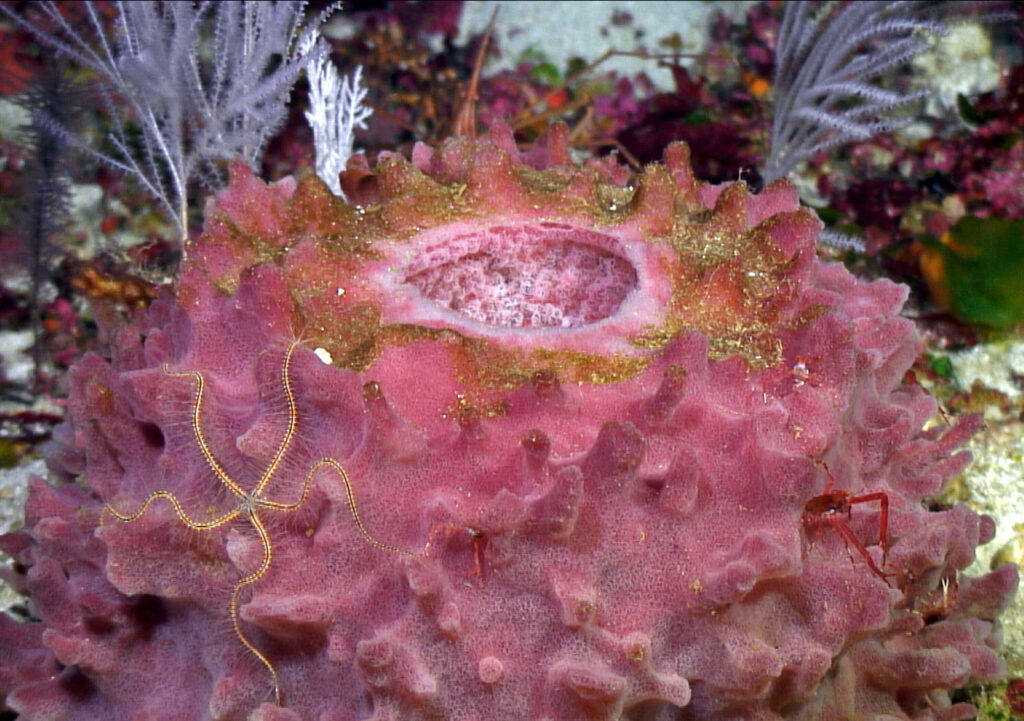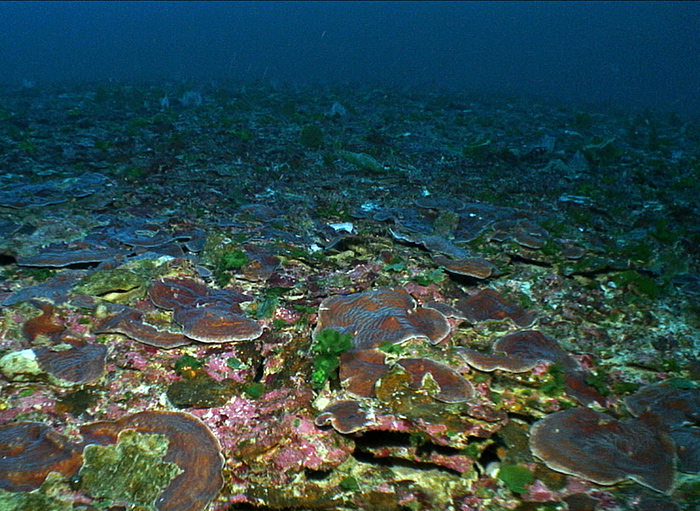A multi-institutional team of scientists funded by NCCOS has published an assessment of the mesophotic coral reefs (75–270 feet deep) located roughly 150 miles off of Florida’s southwest coast. The report summarizes habitat, macrobiota, and fish population data collected during four research cruises from 2012 to 2015 within and adjacent to the Pulley Ridge Habitat Area of Particular Concern and at sites adjacent to the North and South Tortugas Ecological Reserves and the Florida Keys National Marine Sanctuary.
The researchers are investigating the role that these mesophotic reefs may play in replenishing commercially important fish species, such as grouper and snapper, and other organisms in the shallower, downstream reefs of the Florida Keys. A recent study of bicolor damselfish populations in the Florida Keys found that they may owe some of their sustainability to the mesophotic reefs of Pulley Ridge. Project data will inform management decisions about Florida’s mesophotic reefs, including a possible expansion of marine protected areas at Pulley Ridge and the Tortugas.
In 2014, the team discovered a new coral area near Pulley Ridge that has the densest cover of plate corals known in the Gulf of Mexico. Unfortunately, over the course of the project, the researchers also recorded an increase in the number of invasive lionfish in the study area.
The NOAA-sponsored project, led by the University of Miami, represents a collaboration of over 35 scientists at 11 different universities pooling their expertise with state and federal agency scientists through NOAA’s Cooperative Institute for Marine and Atmospheric Studies at the University of Miami in coordination with the Cooperative Institute for Ocean Exploration, Research, and Technology at Florida Atlantic University.


